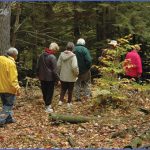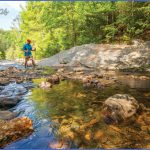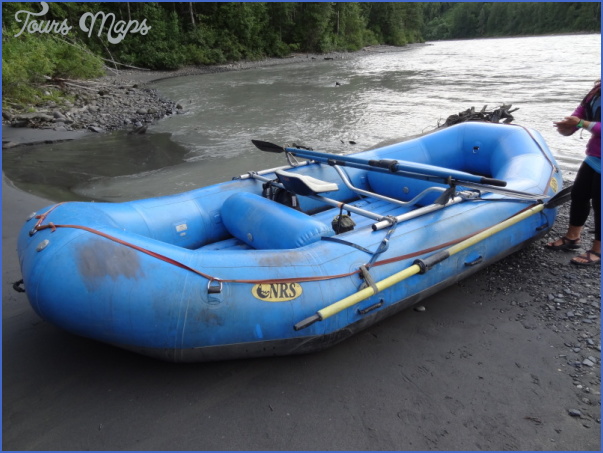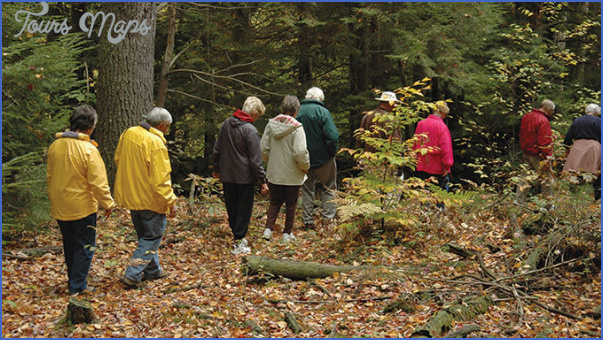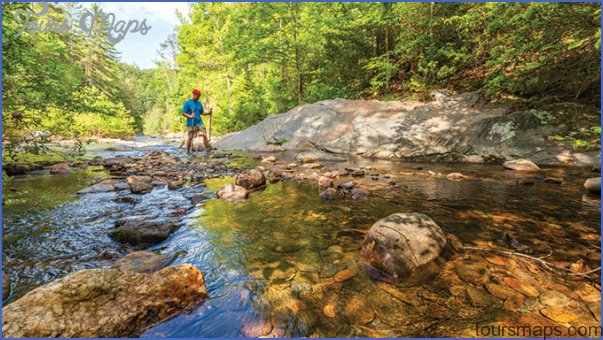COWEE VALLEY, NANTAHALA RIVER, AND WAYAH BALD
You’re going to see a lot of smiling faces on this route. You’ll see people playing in mud, floating down rivers, and having the time of their lives. To get the most out of this route, plan to get dirty and wet.
Start out on NC 28 in Franklin. Head west for 12 miles, then turn left onto Tellico Road. Drive 1 mile, then turn right onto Needmore Road. Follow it 9 miles, then turn left onto U.S. 19. Drive 12 miles, then turn left onto Wayah Road. Drive 8 miles, then turn left onto White Oak Lane. Go a quarter mile, then turn right onto Cold Springs Road. Drive half a mile, then turn right onto Forest Road 711 (may be gated in winter). Drive 15 miles, then turn left onto Wayah Road. Drive 2 miles, then turn left onto Forest Road 69. Drive to the end, then backtrack to Wayah Road and turn left. Follow it 9 miles to Old Murphy Road. (80 miles)
Nine-year-old Angela Booth proudly displays the treasures she discovered at a Cowee
Creek Valley gem mine.
In the Cowee Creek Valley region outside Franklin, kids and their parents sift through mud in search of rubies, sapphires, and a rose-colored form of garnet called rhodolite. Ruby and sapphire are colored varieties of the naturally clear mineral corundum. Because corundum is second only to diamond in hardness among minerals, it is ideal for use as an abrasive. Local commercial mining of the mineral began in the late 1800s, but the efforts never proved very profitable. And with the development of synthetic corundum in the early 1900s, the industrial demand for the natural stones diminished.
The demand for gem-quality corundum never ceased, though. In 1893, Tiffany’s sent a man to investigate Cowee Creek Valley. His report caused quite a stir, and the local people began to realize the importance of those red and blue stones they had been finding in the creek beds for so long. Ever since, people have been looking here for rubies, sapphires, and rhodolite. Rhodolite, like the rhododendron plant, gets its name from the Greek word for rose.
Buckets of local dirt await gem hunters at the Sheffield Mine in Cowee Creek Valley.
At most area mines, you pay a fee for a bucket of dirt and a seat at a flume. Using a sieve, you slowly wash away the smaller mud particles, hopefully revealing a prized find. At the Sheffield Mine, a ruby or sapphire weighing thirty carats or more is called a honker and when someone finds one, a loud bell announces it to the crowd. During the 2006 season, visitors found some four hundred honkers at the mine. At most mines you can buy native buckets, meaning the dirt comes straight from local ground, or salted buckets, which have low-quality gemstones or other colorful minerals added. These added stones may or may not be from this area. Salted buckets are good for the kids, who are guaranteed to find something, but serious rockhounds wouldn’t take a salted bucket if you gave it to them.
Rafts and Rubies Photo Gallery
Maybe You Like Them Too
- The Best Cities To Visit in The World
- World’s 10 Best Places To Visit
- Coolest Countries in the World to Visit
- Travel to Santorini, Greece
- Map of Barbados – Holiday in Barbados


